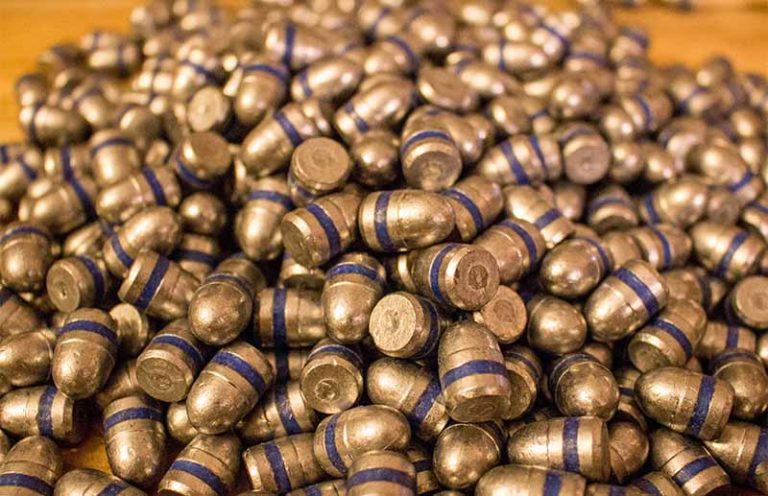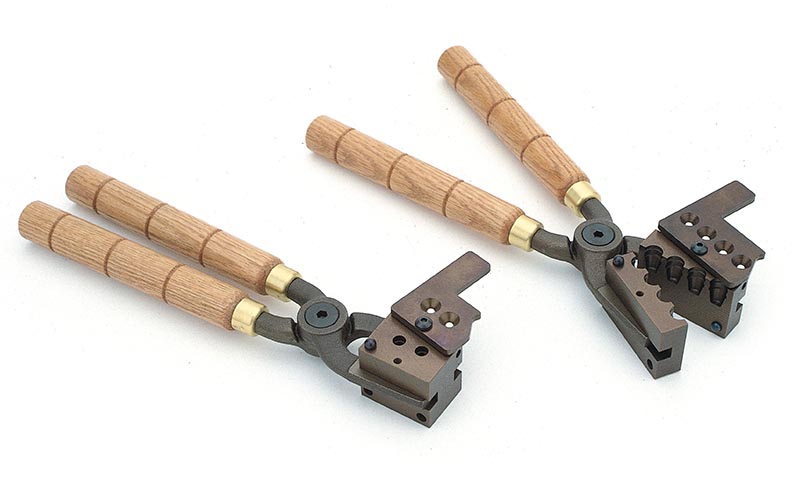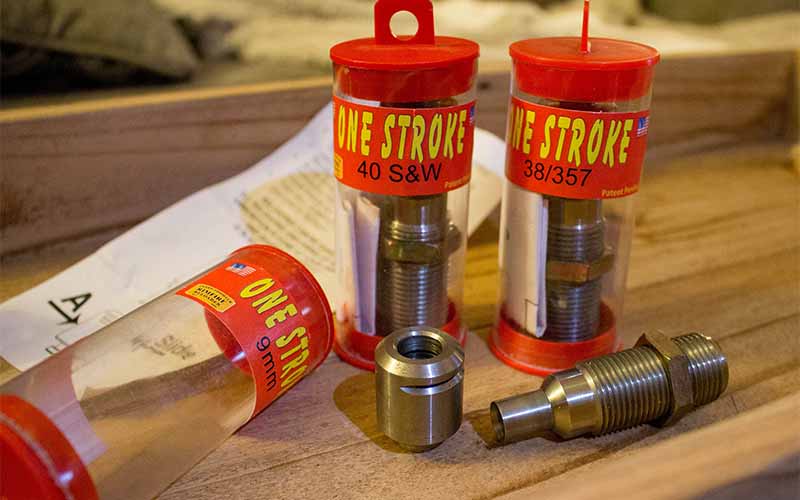
Reloading with lead bullets is still relevant, and still effective.
To say we’re in the midst of a component crunch just might be the understatement of the decade. There have been a few opportunities to snatch up some primers and powders, albeit at a significant price increase. And the cost of projectiles, when they’re available, has increased commensurate to the other reloading components.
If you’re looking for premium projectiles, well … hang onto your wallet. Though I love to shoot the best projectiles I can get, I also realize the cost factor involved. And for what practicing any of us can afford to do anymore, we might be better served by a more affordable projectile.
There are several different ideas regarding affordable projectiles, for both the rifle and pistol shooters. Going back to the earliest projectiles for centerfire cartridges, a simple lead bullet can still make a great choice for a reloader in a pinch. They function especially well in handguns, though there are plenty of choices for rifles as well—so long as you keep velocities at a reasonable level. If you want to take advantage of the affordability and availability of cast lead projectiles, you have two options: either buy pre-cast lead bullets or a set of bullet molds, or melt some lead and cast your own.

Lead Still Works
Perusing older reloading books will show how popular bullet casting was just a few decades ago, but the hobby seems to be dying quickly. It’s a shame, because it’s a fun hobby, adding yet another dimension to the satisfaction of loading your own ammunition. While it has been made crystal clear that the general perception of lead has shifted to the negative, it’s a great medium for projectiles. It’s easy to work, has a relatively low melting point and remains the go-to choice for the vast majority of our projectiles.
Casting bullets isn’t a difficult affair, providing you’ve got good material to work with and a safe space to perform the task. I prefer casting bullets outdoors in nice weather, or in a large building with adequate ventilation in the colder months. RCBS, Lee, Lyman and SAECO (Redding) all offer high-quality bullet molds, ranging from single-cavity affairs to four-cavity molds and more.

Suffice it to say that the process of casting bullets can be as simple or as complex as you’d like to make it. The basics? Melt lead in a pot, pour the molten lead into the mold and voila!—you have a projectile. Going further down the rabbit hole, harder metals such as antimony can be mixed (in the proper ratio) to create what’s known as a “hard cast” bullet—a good choice for hunters who need their bullet to hold together enough to guarantee deep penetration.
Pure lead can make a bit of a mess if pushed hard, and it can be difficult to clean out of your barrel. The expanding gases will leak past the bullet, causing the lead to “smear” across the rifling, affecting the stability of the bullet.
A gas check—a small cup at the base of the bullet made of copper or a similar metal, so long as it’s harder than the lead bullet—can be installed to seal the gases and keep them where they belong: at the base of the bullet. Gas checks can be purchased—Hornady is a great source—or, for those who like to take the DIY thing to another level, grab the One Stroke Gas Check die, which can turn scraps of aluminum flashing into a gas check of a particular diameter with the pull of your press.

Either way, a gas check crimped onto the base of a lead bullet greatly improves performance and reduces cleanup.
Buying For Building
Buying your lead bullets is a perfectly viable option, and one I’ve used in recent years when time is at a premium. Meister Bullets is a source of good cast lead projectiles, and Federal’s Syntech polymer-coated lead bullets are a great choice for the reloader, as the coating greatly aids in keeping handguns clean.

The fact of the matter is that premium bullets aren’t always necessary, especially within the confines of a particular shooting or hunting situation. Many times, I’ve done basic load development or prepared some target ammunition for training a new shooter using a basic, affordable bullet like Speer’s TMJ line of projectiles.
Speer’s projectiles are often overlooked, and that can be used to the reloader’s advantage when trying to source component bullets. The Grand Slam series of bullets are a sound choice for hunters as an all-around bullet, well-suited to most hunting situations, and the TMJ (Total Metal Jacket) series can be wonderfully accurate. You may have to weigh the projectiles, sorting them into lots to achieve the best accuracy. And the Speer TMJ line includes a full selection of choices for handgun cartridges.
Berry’s plated handgun bullets are also a great choice to keep your handgun properly fed. With a full selection of copper-plated handgun projectiles, Berry’s has long been relied upon for the bulk handgun reloader. They’re fantastic as a target bullet, and while they may not give the terminal performance associated with the premium handgun bullet designs, the U.S. military has proven the effectiveness of full metal jacket bullets for well over a century.

There’s Always A Way
A good reloader will make something out of nothing. Sourcing components—primers, powders, cases and projectiles—is a big part of keeping the reloading bench up and running, and utilizing the “by any means necessary” mentality may include the use of products that may not be the ideal choice for the situation at hand, but the use of those products that’ll suffice in the face of adversity. In this case, it might mean those projectiles that are both affordable and available.
Editor's Note: This article originally appeared in the January 2022 issue of Gun Digest the Magazine.
More On Reloading:
- Tips For Reloading the .30-06 Springfield
- Loving Your Luger: Reloading the 9mm Luger
- Handloading: Tips For Reloading The 7mm Rem Mag
- How To: Tips For Reloading the .223 Remington
- Reloading Bench: The Inside On Reloading For The .30-30 Winchester

Next Step: Get your FREE Printable Target Pack
Enhance your shooting precision with our 62 MOA Targets, perfect for rifles and handguns. Crafted in collaboration with Storm Tactical for accuracy and versatility.
Subscribe to the Gun Digest email newsletter and get your downloadable target pack sent straight to your inbox. Stay updated with the latest firearms info in the industry.

![Best Concealed Carry Guns In 2025 [Field Tested] Wilson Combat EDC X9S 1](https://gundigest.com/wp-content/uploads/Wilson-Combat-EDC-X9S-1-324x160.jpg)


![Best 9mm Carbine: Affordable PCCs [Tested] Ruger Carbine Shooting](https://gundigest.com/wp-content/uploads/Ruger-Carbine-Shooting-100x70.jpg)
![Best AR-15: Top Options Available Today [Field Tested] Harrington and Richardson PSA XM177E2 feature](https://gundigest.com/wp-content/uploads/Harrington-and-Richardson-PSA-XM177E2-feature-100x70.jpg)
